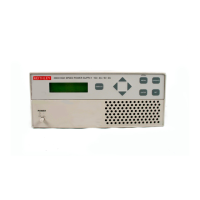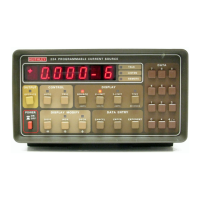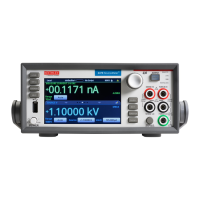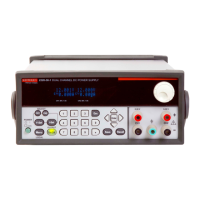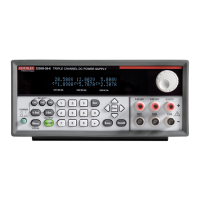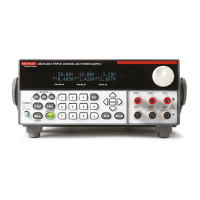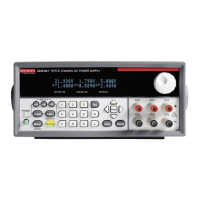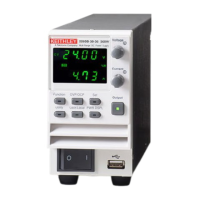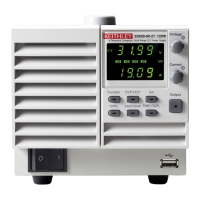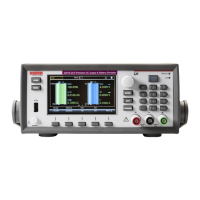4-8 Long Integration Measurements
AUTO TIME searches for two consecutive RISING edges. (The setting of trigger edge does
not affect AUTO TIME.)
Therefore, with NEITHER edge set, the PTT (Pulse Trigger Timeout) bits
in the status model may get set. (See section 8 on the status model for more information.) Although
autotime does not use the user setting for trigger edge, the user setting will be used for trigger com-
mands (e.g., READ?, MEASure?, etc.).
Pulse timeout
Use the PULSE TIMEOUT item of the LONG INTEGRAT #1/#2 menu item to set pulse
timeout. (LONG INTEGRAT #1 refers to the battery channel while LONG INTEGRAT #2
refers to the charger channel.)
Set pulse timeout (from 1 to 63 seconds) for long integration measurements that are
conf
igured to be triggered by RISING or FALLING pulse edges. If a pulse is not detected within
the specified time (PULSE TIMEOUT), the “NO PULSE” message will be displayed. While the
“NO PULSE” message is displayed, the instrument continues to search for a pulse. With
NEITHER edge selected, the PULSE TIMEOUT setting is inactive.
Trigger edge, trigger level, and trigger level range
Use the following items of the LONG INTEGRAT#1/#2 menu item to set trigger edge, trigger
level, and trigger level range. (LONG INTEGRAT #1 refers to the battery channel while LONG
INTEGRAT #2 refers to the charger channel.)
Trigger edge
A pulse edge can be used to trigger the start of the measurement (TRIGGER EDGE). Select
RISING to use a rising pulse edge to start the measurement. Select FALLING to use a falling
pulse edge to start the measurement. A third option is available if you do not want measurements
controlled by pulse edges. With NEITHER selected, measurements will start as soon as the long
integration function is selected. A pulse has to be detected before a RISING or FALLING pulse
edge can trigger a long integration measurement (see “Trigger level” on page 4-4).
Trigger level
Before a RISING or FALLING pulse edge can trigger the start of a long integration, the pulse
must first be detected. TRIGGER LEVEL specifies the minimum pulse level that will cause
detection on the Models 2306, 2306-VS, and 2306-PJ when on the 5A current range. For the
2306-PJ, when on the 500mA current range, use TRIGGER LEVEL mA to specify the mini-
mum pulse level detection on this current range.
For the Models 2306, 2306-VS, and 2306-PJ (battery channel #1) 5A current range —
Th
e trigger level can be set for either the 5A, 1A, or 100mA range. For the 5A range, the trigger
level can be set from 0 to 5A in 5mA steps. For the 1A range, the trigger level can be set from 0
to 1A in 1mA steps. For the 100mA range, the trigger level can be set from 0 to 100mA in 0.1mA
steps.
Test Equipment Depot - 800.517.8431 - 99 Washington Street Melrose, MA 02176
TestEquipmentDepot.com
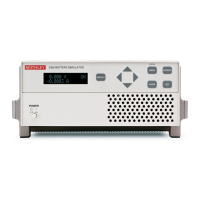
